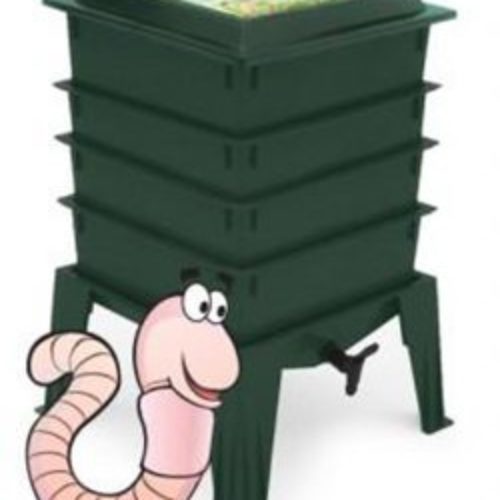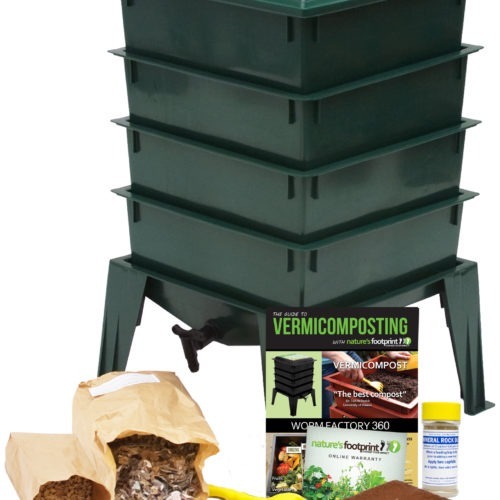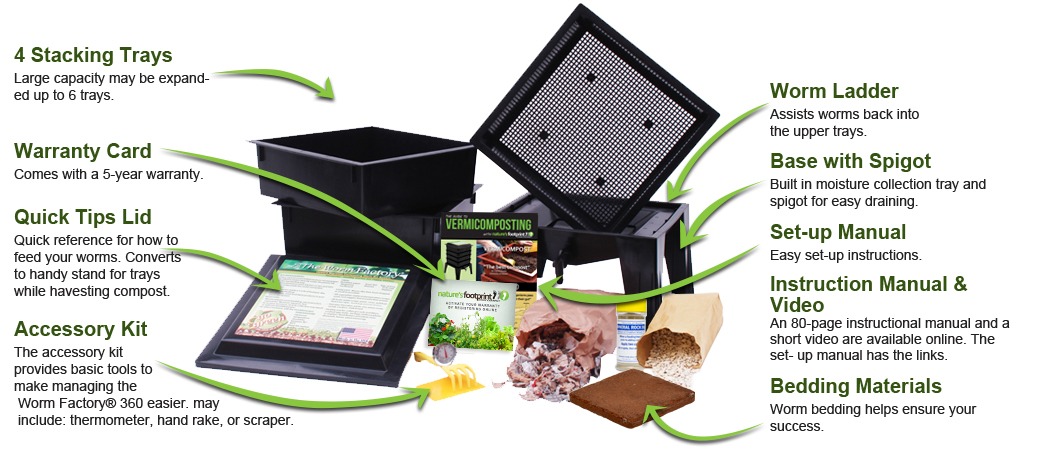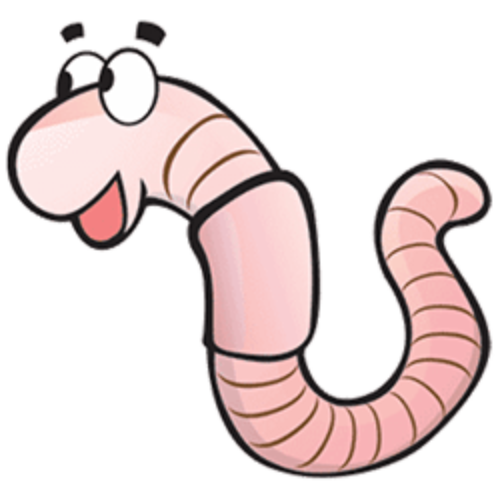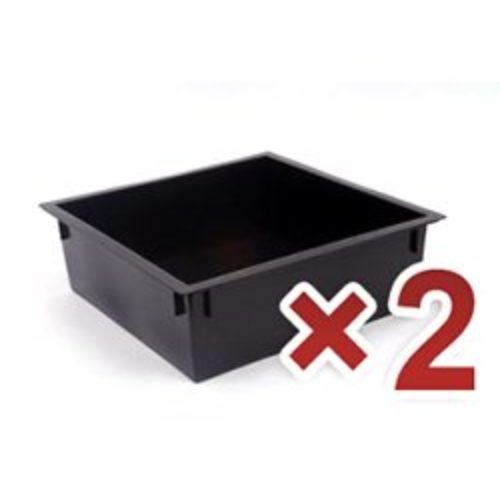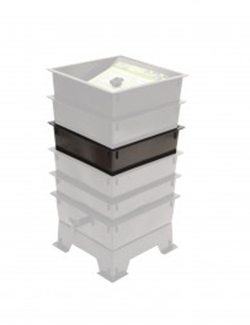 Descriptions of good and bad organisms you will find in your worm bin
Descriptions of good and bad organisms you will find in your worm bin
In a healthy, productive worm bin it is perfectly normal and expected to find a few other critters living along side your composting worms. Here are a few other critters in my worm composting bin: rolly pollys (sow bugs), ants, centipedes, millipedes, earwigs, pot worms (very small white worms), and more. Most of these other bugs, insects, and critters won’t hurt your worms and are usually a sign of a healthy worm bin because they help with the decomposition process.
Rollypollys (sow bugs, pill bugs)
Rollypollys are actually crustaceans and need a very moist environment to live. They love the moisture in a worm bin and eat a vegetarian diet. They will not harm your worms.
Earwigs
 Earwigs are often misunderstood insects. They aren’t called earwigs because they will crawl into your ear and eat your brain! Earwigs are skinny insects ranging in length from 1/4 inch to 1/2 inch. They have wings but rarely use them. They do have pincers coming out of their abdomen that look pretty menacing. They do not have any venom or poison.
Earwigs are often misunderstood insects. They aren’t called earwigs because they will crawl into your ear and eat your brain! Earwigs are skinny insects ranging in length from 1/4 inch to 1/2 inch. They have wings but rarely use them. They do have pincers coming out of their abdomen that look pretty menacing. They do not have any venom or poison.
If provoked they may use their pincers on you but they aren’t strong enough to break the skin. They are nocturnal, hiding during the day and active at night. Earwigs are proud members of the decomposition club. They help break stuff down and will not harm your composting worms.
Springtails
 Springtails are teeny tiny white insects. You can see them with the naked eye; they look like very small white dots. Springtails get their name from the long (relative to their body size) tail that they keep tucked under their abdomen. When they are threatened (like when you start digging in your worm bin), they push off with their long tail jumping away. Springtails do not harm composting worms and they do help with decomposition.
Springtails are teeny tiny white insects. You can see them with the naked eye; they look like very small white dots. Springtails get their name from the long (relative to their body size) tail that they keep tucked under their abdomen. When they are threatened (like when you start digging in your worm bin), they push off with their long tail jumping away. Springtails do not harm composting worms and they do help with decomposition.
Millipedes
Millipedes (thousand legged) are round bodied and have two pairs of legs per body segment. They are vegetarian and help with the decomposition process. Millipedes are not the same as centipedes (hundred legged). Centipedes are flat-bodied and have only one pair of legs per body segment. Centipedes kill worms. Millipedes do not.
Pot worms
 Many people confuse pot worms (Enchytraeidae) in their worm bin with baby red wiggler worms. Pot worms are another variety of earthworm that live happily in a worm bin or compost pile. They are very small, white colored worms.
Many people confuse pot worms (Enchytraeidae) in their worm bin with baby red wiggler worms. Pot worms are another variety of earthworm that live happily in a worm bin or compost pile. They are very small, white colored worms.
While pot worms aren’t by themselves a bad thing (they also help with decomposition), pot worms thrive in different conditions than red wigglers. So, if you have a pot worm infestation your worm bin or compost pile is not set up well for your red wigglers to thrive.
Mites
Mites are common in a worm bin. They are very small and to the naked eye just look like little specs. There are many many varieties of mites, most eat rotting organic matter or the poop of another creature. Most mites are a benefit in your worm bin, though an earthworm mite (see below) infestation can be bad for your worms.
Black Soldier Fly Larvae

People often freak out when they first find Soldier Fly Larvae in their worm bin because they look like maggots. They are similar to common house fly maggots in that they are the larvae stage of a type of fly, however they eat any type of food scraps not primarily meat. Many people intentionally use BSF (black soldier fly) larvae to compost their food scraps.
I have even set up black soldier fly composters on top of my chicken coop so that the adult larvae crawl out (when they are ready to turn into a fly) and drop right down into the chicken coop. My chickens love eating them and have learned to wait under the BSF composters. A free protein source!
Black soldier fly are found naturally in most parts of the world and will most likely find your outdoor worm bin in the summer. They will not hurt your composting worms and can easily coexist in the same bin.
Bad bugs in a worm bin:
Centipedes
 Centipedes are skinny and flat-bodied with one pair of legs per body segment. Centipede means one hundred legged. Centipedes are rare in a worm bin and should be removed when found. They are predators that will kill and eat earthworms.
Centipedes are skinny and flat-bodied with one pair of legs per body segment. Centipede means one hundred legged. Centipedes are rare in a worm bin and should be removed when found. They are predators that will kill and eat earthworms.
Centipedes are not the same as millipedes (thousand legged). Millipedes are round bodied, have two pairs of legs per body segment, and are vegetarian (they don’t hurt worms). Learn to tell the difference and kick those centipedes out.
Fruit Flies
If you are a worm composter, you will get fruit flies at some point. They are a pain. Fruit fly eggs often ride into your home on the skin of the lovely fruit you purchase. As the fruit starts to ripen and eventually rot, the eggs hatch and fruit flies emerge.
If they are not controlled immediately, a small fruit fly problem can easily turn into a large fruit fly problem. Take steps to prevent a fruit fly infestation and immediately take action if you start seeing fruit flies. Here is a resource. How to Get Rid of Fruit Flies Fast
Earthworm Mites
Most mites that you find in your worm bin are harmless to your worms and help with decomposition. One species of mite, called earthworm mites, can negatively impact your worm bin. Earthworm mites are reddish brown in color. In a serious earthworm mite infestation, your composting worms may refuse to eat because their food is covered in red mites.
If this happens to you, remove and destroy any food scraps that are visibly covered in red mites. If you want to get rid of even more you can set up a trap for this with some bread soaked in milk. Leave the bread in the bin overnight and then remove it along with any earthworm mites that have accumulated. Infestations to the point of slowing down or stopping worm feeding are rare.
 Ants
Ants
Ants have never been a problem in my indoor worm bins. I have had lots of ants in my larger outdoor worm composting systems. An ant infestation is usually a sign that your worm bin bedding is too dry. Add some water with a spray bottle or watering can. If that doesn’t work try sprinkling ground cinnamon wherever the ants are. Ants hate cinnamon. Don’t use a poison to get rid of ants because that will hurt your worms.
Roaches
Nobody wants roaches in their worm bin and I have found them to be rare. The presence of roaches in your worm bin depends a lot on the presence of roaches in your house. Roaches can also be a signal that your worm bin bedding is too dry. Try adding some water with a spray bottle.
Also, be sure to bury your food scraps well as roaches are attracted to food left out. If you need to, set up a few roach bait traps outside your worm bin. Do not put roach traps inside your worm bin as they can damage your worms.
 Spiders
Spiders
Most spiders are generally harmless to worms but they are unpleasant for the human worm farmer. For that reason, I would remove any spiders that you find in your worm bin.
Summary
A healthy worm composting bin is its own ecosystem. Of course it will have lots of composting worms but it will also include lots of other bugs and insects. Most of the other critters you will find in your worm bin are harmless to your worms and to you as the worm farmer. But, there are a few that are harmful. When you find any of these pests you need to deal with them so that your composting worms don’t suffer. Your job as the worm farmer is to know the difference between the good organisms and the harmful ones.



